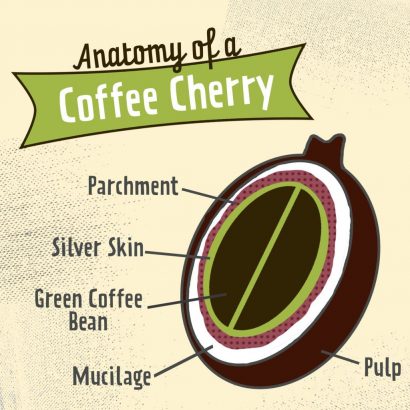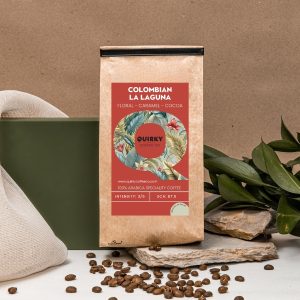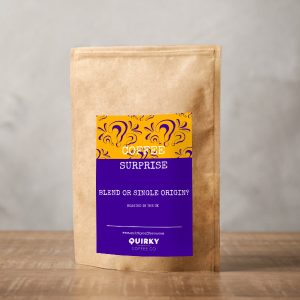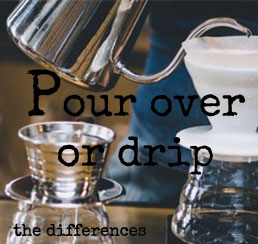What are Arabica Coffee Beans?
Let’s start this post off on the right foot by saying that Arabica coffee beans are by far the best type of coffee beans that you can buy. Why is that? Read on, coffee lovers, and you will discover why this is the case.
The two main coffee species that are enjoyed all over the world are Coffea Arabica and Coffea Canephora (Robusta). Arabica is divided into two varieties, Typica and Bourbon. The latter, Coffea Canephora, is known as Robusta.
Arabica coffee beans are far superior to that Robusta, and this is very apparent in the taste, which is smoother and less acidic than that of its relative.
Arabica brings the highest prices. The better Arabicas are high-grown coffees, this is generally between 2,000 and 6,000 feet (610 to 1830 metres) above sea level. However, the optimal altitude varies with proximity to the equator.
All the coffee we offer in our shop is 100% Arabica. All of the world’s highest-graded coffee & beans given speciality status are of the Arabica species.
Not all Arabica, however, is Speciality. More commercial-grade coffee will not be as satisfying to drink as 100% Arabica beans that have been awarded an SCA grading of over 80. This denotes Speciality coffee in its most delicious form. Furthermore, an Arabica coffee bean can be gifted with the title of Speciality and prized with a Cup of Excellence, such as our Nicaraguan La Bastilla and Nicaraguan La Bastilla P3.
Where did the Arabica Coffee Bean journey start, and where does it grow?
It was the Arabica coffee cherry in Ethiopia that started off the whole coffee story, and it still grows best on the high-altitude ground. The Arabica shrub can grow up to 5 metres but is usually kept at around 2 metres to be more commercially farmed.
Arabica is believed to be the first species of coffee to be cultivated, with its origin dating back to 1,000 BC – you could say it is the Adam & Eve of coffee!
According to the ICO (International Coffee Organisation), more than 60% of the world’s coffee production comes from Arabica cultivars.
Arabica is grown in dozens of countries between the Tropic of Capricorn and the Tropic of Cancer. This is known as the Bean Belt.
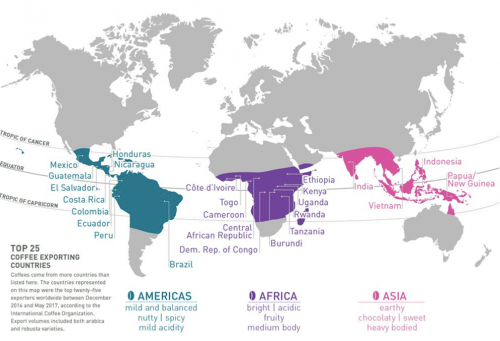
Currently, 129 species of Coffea have been identified, mainly through the work of Kew Gardens in London – this number will constantly be growing.
Varieties of Arabica Coffee Beans
We mentioned two types of Arabica coffee beans, Typica and Bourbon. Typica is considered the first variety of species to be discovered. It is a low-yielding variety that is enjoyed across the world for its excellent cup quality.
There are many varieties of Typica that have mutated. The Dutch were the first to spread coffee worldwide for commercial production, which was the variety they took with them.
Typica is still grown extensively in many parts of the world, and as a result, Typica is known by various names, including Sumatra and Arabigo. Our Organic Sumatra Mandheling is an example of this.
Bourbon varieties are awarded for their more complex, balanced aromas and have developed into high-quality sub-types. There are a number of Bourbon varieties that have propagated to suit the regional climate, which only flourishes at high altitudes.
The Bourbon variety was a natural mutation of Typica, which occurred on the island of Réunion (historically called Bourbon). It has a distinctive sweetness making it very popular amongst coffee lovers.
Arabica Beans Start As Fruit
Could this possibly mean that a cup of coffee counts as one of our 5 A Day?
We have spoken to so many people that did not realise that a coffee bean starts its life as a fruit. The coffee bean is a seed inside of that fruit. This visually pleasing fruit is called a coffee cherry. You would look at a coffee cherry and think you would want to bake it in a tart rather than brew as a delicious hot beverage, or a cold brew, of course.
You could liken the coffee cherry to a cup of coffee, like a grape to a glass of wine. So many different types to try before you find ‘the one’ that you can’t stop drinking!
The Anatomy of a Coffee Bean
Green Bean/Seed or Endosperm – The raw Arabica coffee bean/seed sits comfortably inside the red cherry until it is ready to fly the nest.
This is when it is then processed to become the perfectly roasted bean that we love.
Silver Skin or Spermoderm – This protects our precious little gems.
Parchment or Endocarp – This is another level of protection for the coffee bean. It surrounds the beans and has 3-7 layers.
Mucilage or Mesocarp – This is the flesh of the coffee fruit. Whilst the cherry is maturing, this layer becomes wealthy in sugars.
Outer Skin – Epicarp – This is the outer skin of the cherry, changing from one perfect colour to another. Green, yellow, orange and then finally the bright ripe red!
Arabica is A Clever Bean
Arabica has two sets of chromosomes, so it is capable of self-pollination and genetic mutation, which means Arabica and all its forms are relatively stable.
As this is such a clever little cherry, new varieties are continually being discovered.
If you are unsure which to try, as you are new to the coffee world, please contact us. We are always happy to talk about coffee and advise on which to try.
Someone recently said to us that they didn’t like coffee! We said, “That’s because you haven’t tried a great coffee”. Just like a fine wine, one wine does not fit all, you have to try many before you find the one that really hits the spot!
Another clever fact about Arabica is that of the Peaberry. Unlike all other coffee cherries, home to two seeds, the Peaberry only has one. This is a mutation resulting in the Peaberry, which is known for its unique sweetness. You may like to try out Kenya Peaberry, which packs your cup of sweet flavours.
Legends of Arabica
There are several legends about the first use of Arabica coffee beans. One legend suggests the goat herder, Kaldi, was the one who discovered coffee. He found that after eating the cherries from a particular Arabica tree, he became energised. As legend has it Kaldi shared his discovery with the Abbot of the local monastery, and wanting to prove his theory, they made a drink out of the cherries.
The effect of this was that they were more energetic and did not want to sleep! Does this sound familiar?
Word, of course, spread fast until it reached the Arabian Peninsula, where coffee as a beverage flourished.
Benefits of Arabica
One of the significant benefits of Arabica coffee is that it contains antioxidants like Vitamin E which helps to reduce the risk of infections and diseases.
In addition, it contains some B vitamins, magnesium and potassium.
Recent research published in the Annals of Internal Medicine suggests that having three cups of coffee per day could lengthen lifespan by lowering the risk of death from several essential conditions, including heart disease.
The study followed over 500,000 people from 10 European countries for 16 years. Of course, there are always critics, and to this end, it is suggested that the study could not consider economic, social and lifestyle factors.
There are further studies that can be found that suggest that Arabica coffee may lower the risk of developing type 2 diabetes and prevent dementia and Alzheimer’s disease. However, the findings have been inconsistent and more extensive studies must be undertaken.
SUMMARY
The Arabia coffee bean is the finest type of coffee that money can buy. Some you will like, some you will love, and Quirky Coffee Company sets out to provide you with the ones you will love!
Please visit our online Arabica shop where you can read, select and purchase 100% Arabica speciality coffee.

